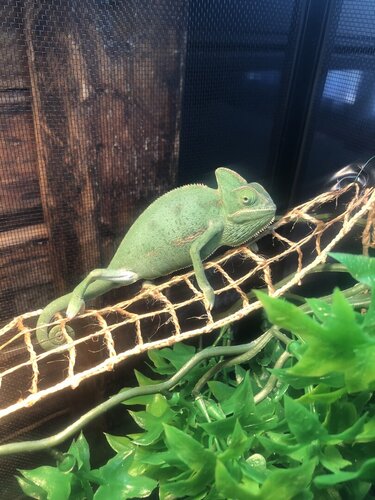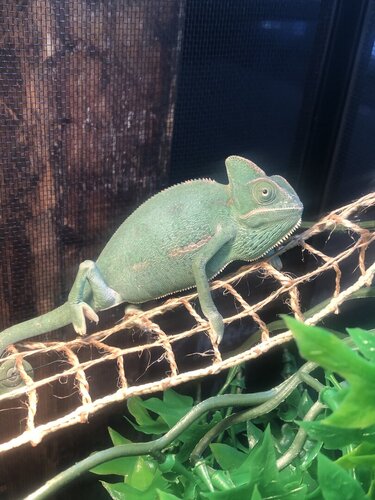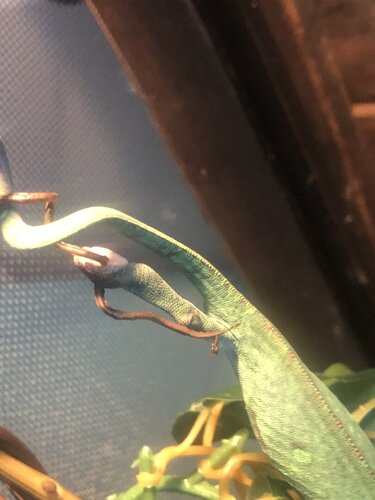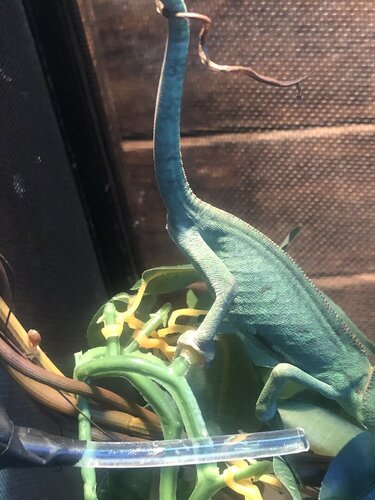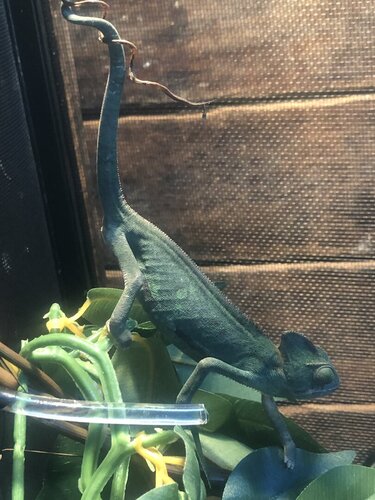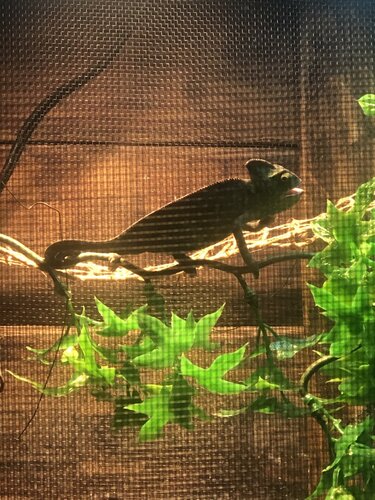Laekyloo
New Member
Hey everyone! I have a veiled chameleon. He is probably 4 months old. I’m not too sure because I got him from petco and they weren’t exactly sure how old. Anyways, I wanted to post a picture of him to see what y’all thought. His throat looks like it sags. I’ll post a picture so you can see what I’m talking about. Let me know how he looks to y’all and what you think!! Thanks

